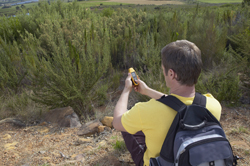Unleashing new global positioning technologies
During the last decade, satellite navigation and Global Navigation Satellite System (GNSS)-related technologies have become commonplace in consumer products. There is now a huge demand for more sophisticated positioning-based applications for work and leisure. But this next generation of applications needs greater reliability and integrity than that provided by the global positioning system (GPS), the satellite system upon which most current GNSS receivers rely. This signal has limited accuracy and can be unreliable in urban environments, in bad weather or in the presence of other wireless signals. Although the European satellite navigation system Galileo will greatly improve GNSS services, it will not be fully operational until around 2020. In the meantime, the European Space Agency (ESA) has developed the European Geostationary Navigation Overlay Service (EGNOS), an augmentation system that provides the necessary improvements for the GPS signal. However, so far the only commercial applications to take advantage of the improved capabilities have been those related to civil aviation. The 'Methodologies and tools advancing the design and validation of EGNOS/Galileo aware applications' (MAGNA) project developed software libraries and tools to enable small and medium-sized enterprises (SMEs) to design and validate EGNOS/Galileo-aware positioning applications. Team members analysed the requirements of diverse applications and adapted algorithms currently in use by the air sector. Three key parameters had to be incorporated: the receiver, the local telecoms network and surrounding physical environment, and the EGNOS system itself. Estimates put the global market for positioning technologies at EUR 160 billion by 2020, with applications in areas as diverse as maritime, fleet management, assisted living, and air quality and traffic monitoring. The MAGNA tools will help spur innovation and break down entry barriers to enable smaller companies to compete in this growing market.







